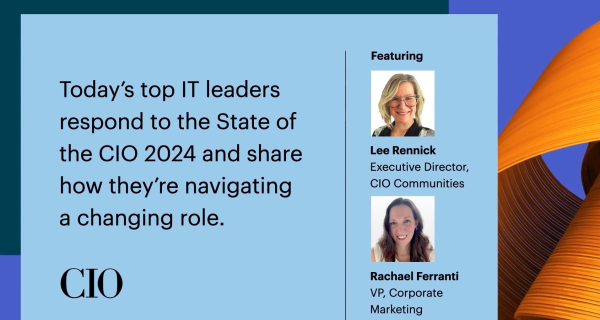In a space so characterized by continuous evolution as B2B marketing, the new year reliably brings about a litany of predictions on how, what, and why we will change the way we work in the coming 12 months. Advancements in martech, new content marketing techniques, tightening of data compliance, and a version of shifting focus from the account, to the ABM list, to the buyer, to the buying group make the list year after year. And while many of these predictions pan out and indeed move the industry forward, every year there’s a sense of juxtaposition and even tension between the promise of the trends and tools on the horizon, and the idea that—fundamentally—our aim as marketers is unchanging and not subject to prediction.
In essence, marketing has always been, and will always be about identifying customer needs, offering solutions out of the desire to solve these needs, and building trust that turns prospects into customers and customers into loyalists. It’s not unlike developing a friendship. Data and technology have made the marketing function measurable, but not altered at its core. Yet as we advance, become more automated in our execution, sharper in our data analysis, more KPI oriented… are we getting increasingly closer, collectively, to a clear pathway to understanding, effectively reaching, and building trust with our buyers? Or have we simply over-tooled ourselves with martech and services that fail to deliver a truly comprehensive view of our prospects—one that would be gained from a strong interpersonal connection with our buyers? In short—can, and will, martech ever lead us to the state of empathy needed in the effective relationship-building we aim for?
Without breaching a dystopian point of singularity, I do believe that there is a future version of martech that can synthesize a variety of subtle and unstructured datapoints (the types that real people produce by the hour), apply something akin to human psychology in its algorithms, and produce a more authentic view of our buyers as thinking, needing, feeling beings. My prediction, and my hope, for 2023 is that we make strides towards this version of martech because marketers will start demanding it.
Martech can have the tendency to create noise while obscuring relevant information on how buyers actually buy. Marketers will be looking to martech to better connect the dots in their data in 2023 and beyond, and to capture and process signals that, while perhaps not highly scored on their own, when combined tell a truer story of the humans immersed in the discovery and purchase process. Some insights we can look to:
- More nuanced views of intent: Marketers are already shifting their focus away from the MQL (the sole lead representing an account, see second-lead syndrome) and towards a more comprehensive view of account propensity and, even more specifically, various opportunities within these accounts. Intent helps marketers understand not just the journey of one buyer but the journeys of buying teams. Metrics of note and intent signals here might be:
- Contextual behavioral signals indicative of demand and purchases: hiring for certain roles, posting questions to their network, attending an event, announcing new initiatives, following vendors on social media.
- Buying group signals: assets being shared, email forwards, multiple content engagements from the same account, junior staff participating in research (vetting solutions and downloading assets for decision makers), engagement from decision makers across multiple teams.
- Truer measures of engagement: Related to intent is the value and quality of digital engagement. Unfortunately, we’ve been championing the wrong metrics in this area. Clicks and downloads are scored uniformly but provide a false sense of validation because not every click or download will have an equally engaged (if engaged at all) buyer triggering that action. Martech needs to enable us to look deeper into buyer behavior by building context around these actions and allowing us to better understand why users are taking certain actions and how they are experiencing and engaging with brands. Martech should measure behaviors such as session duration, page count, active sessions (scrolling through content), engagement paths, multiple downloads, distributed stakeholder activity—and then help us see these behaviors on a larger stage of intent and engagement.
- New metrics and scoring frameworks emerging: In many instances, our existing metrics will remain but it will be up to martech to create a more lifelike picture of intent with what we’re measuring. We should expect our AI technology to better analyze a vast array of signals across channels and across the buying group, and use this data to tell us the detailed story of one group’s specific case, need, and intent. These buying group stories should be the data analysis that our martech aspires to produce. When our technology can help us understand that the same action can have different context among different buying groups, we will make immense strides towards understanding and meeting the unique needs of our buyers.
Technology has certainly allowed us marketers to scale hyper-targeted outreach and be more present on more channels in our buyer’s day-to-day. Yet despite our ability to activate, capture, and measure data better than ever before, I’d argue we’re still circling the drain in terms of gaining human-level insights and understanding about our individual buyers. Yes, customers are more shrewd than ever when it comes to participating in the dance of marketing and voluntarily giving us behavioral datapoints—and this inherent distrust of advertising is a major hurdle that marketers must creatively overcome. But the fact remains that buyers are still out there, in-market, taking action and wanting to be understood and served. It’s up to us as marketers to leverage the data and technological capabilities at our fingertips and start building a more compelling generation of martech that guides us back to the root of marketing—a place of empathy from where we can provide real value.


